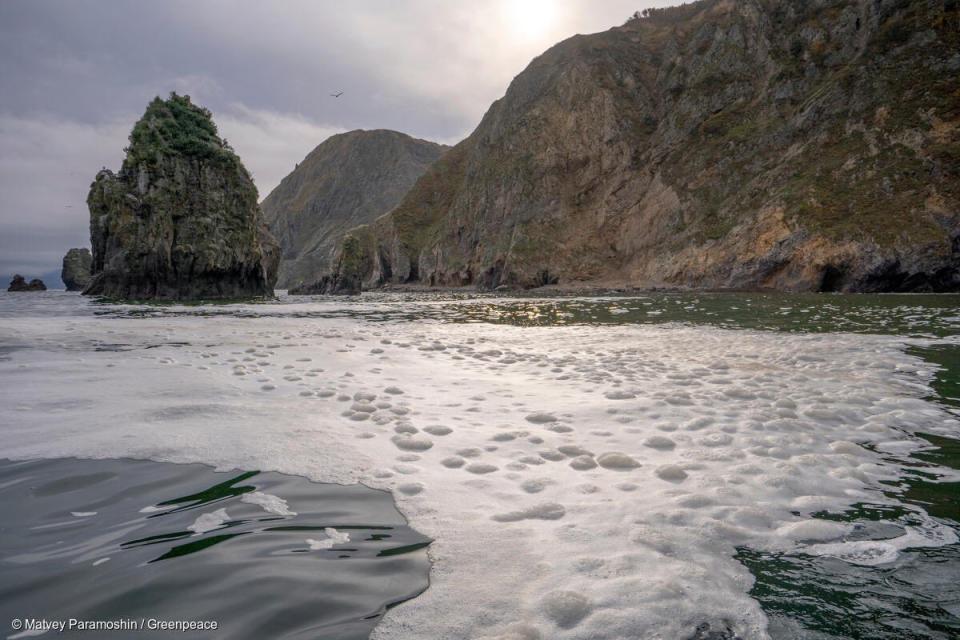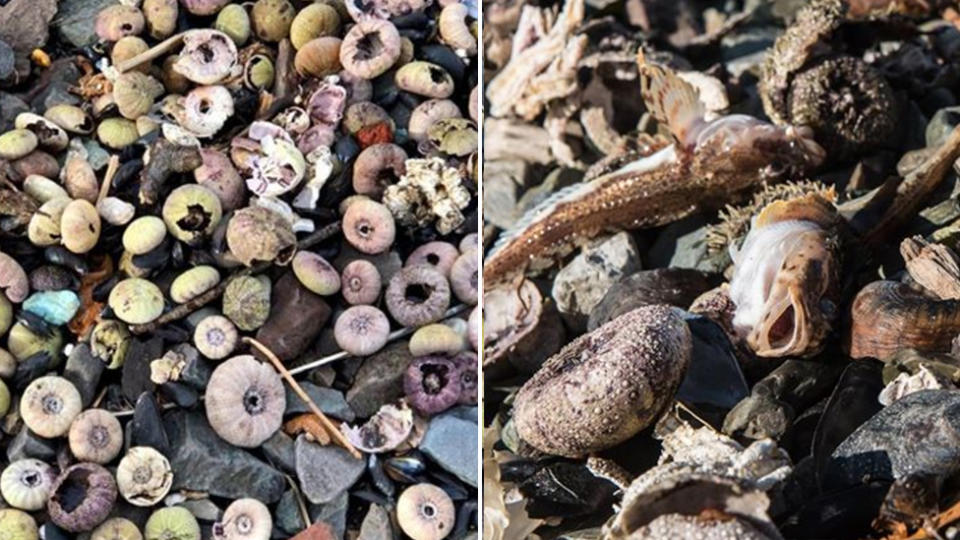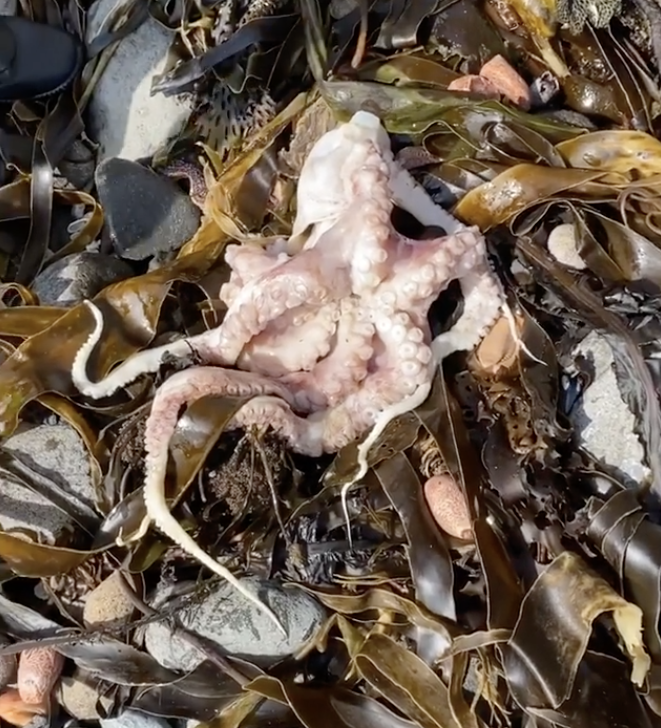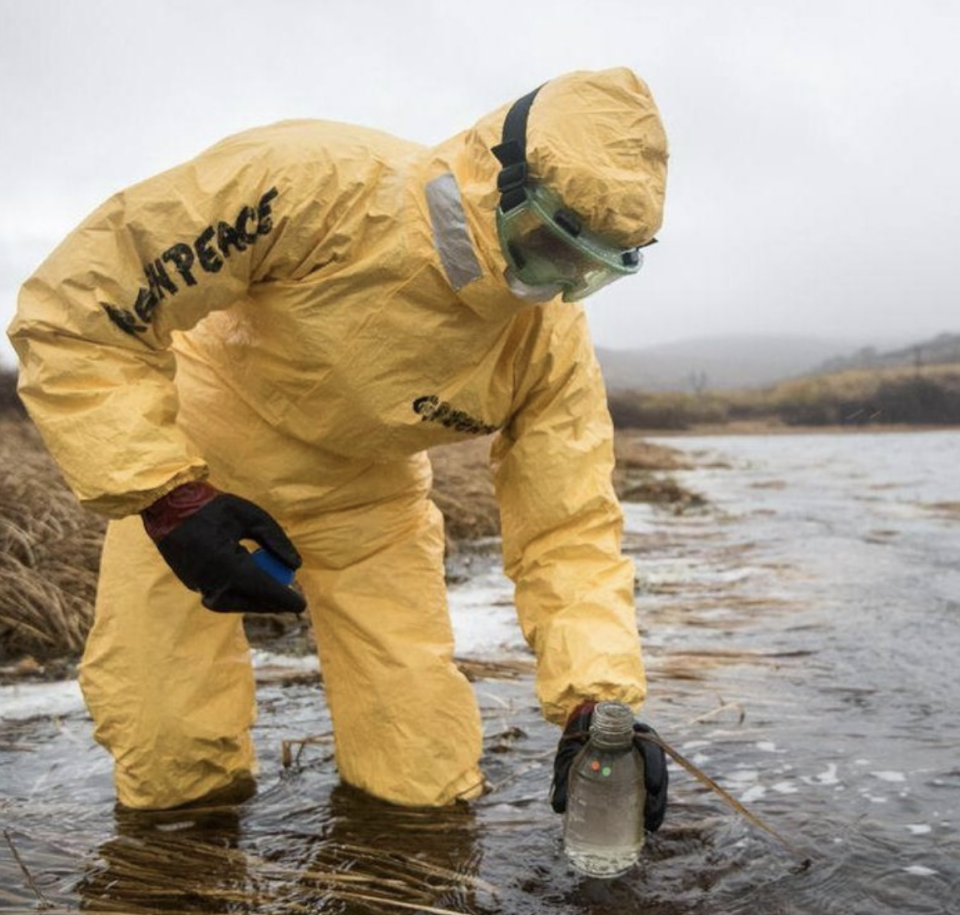Mass deaths uncovered as mysterious toxic tides spark environmental disaster
A group of surfers have sounded the alarm on a potential environmental catastrophe off the coast of Russia where extensive tests have been conducted but the cause is not yet known.
Natasha Danilina had been surfing in the Kamchatka region, along the eastern Russian coast back in August.
In October she spoke about a white veil on her eyes and explained on Instagram she was diagnosed with a corneal chemical burn.
Around September 9 or 10 this year, founder of a surf school on Khalaktyrsky beach in the Kamchatka region, Anton Morozov, had some of his instructors complaining of aching eyes and a white veil preventing them from seeing clearly.

By mid-September hundreds of people who had been surfing at the school on Khalaktyrsky beach claimed they had experienced eye problems, Greenpeace’s Russian branch reported.
Then people in the region reported severe weakness, nausea, many were vomiting, had diarrhoea and a fever.
While those at the surf camps attributed the illness to a virus, divers were saying the entirety of the reef at Avacha Bay was “dead”.
Then images of sea life washed up dead on the Russian shore started to circulate on social media. After a storm, people’s symptoms got worse and surfers noticed seals acting “unusual”, Greenpeace said.
When Mr Morozov addressed the media earlier this month, he stressed the importance for finding out what the cause of the illness and the mass deaths was.

The Government of the Kamachatka Territory promised an investigation and Greenpeace started collecting samples, but the cause of the pollution remains unknown and as WWF Russia noted the scale of the destruction is still unclear.
Lego’s plastic-free commitment - are toys next on the agenda?
Revealed: The plastic items in your life you'll be forced to give up next
“Toxic pollution can also undermine the food supply, which will affect those individuals that may have avoided poisoning,” WWF noted, the organisation partnered with Greenpeace on the expedition to the Kamchatka region.
“If the scale of contamination was large enough, it is likely that harmful substances will also be found in the caught fish.”

Mass deaths along the eastern coast
Off the coast of the Kamchatka Peninsula, in Vestnik Bay, lies Utashud Island.
From there, all the way and along the eastern coast of Kamchatka from Petropavlovsk-Kamchatsky, divers collected samples to examine the damage.
Greenpeace reported in some places along the coast, three-quarters of the organisms were dead.
“Organisms collected from the bottom, water and soil samples had a pungent smell of decomposition,” Greenpeace said.
Diver Alexander Korobok said there were “many corpses”. Greenpeace also found shell-less hermit crabs and other creatures acting in alarming ways, such as starfishes in peculiar positions, shellfish and chitons not reacting when touched.
“Usually you touch them and they close. Such contacts are a threat to life, but now they have no control over what happens to them,” Alexander Senchenko of the Far Eastern Federal University said according to Greenpeace.
The pollution won’t just impact sea life.
WWF Russia said Siberian eiders and sea otters settling in the region for the winter may be hit the hardest, as they feast on urchins and mollusks.

“The death of marine organisms here will come back to haunt far beyond this area, and not only animals, but also people,” Boris Soloviev, chief coordinator of WWF-Russia projects on marine protected areas said.
“After all, the health of the marine ecosystems in this region is a guarantee of the well-being of the residents of Kamchatka and the Kuril Islands.”
Though mass deaths extend further south, beyond the scope of that of the divers and even on the western coast of Kamchatka.
On Russia’s island of Paramushir, south of the Kamchatka peninsula, mass deaths were also reported.
'The coming sand wars': Approaching global crisis people don't know about
Massive mystery holes appear in Siberian tundra, confounding scientists
The hidden crisis of 2020: Graph reveals 'brutal' climate event
“Unlikely it was caused by a storm, we have bad weather every other day and no sea animals are thrown out like this on a mass scale,” resident Alexander told local ASTV.ru channel, according to the Siberian Times.
The Siberian Times also notes there were instances of mass deaths on the western coast of Kamchatka, by the Sea of Okhotsk.
When speaking of the disaster occurring off the western coast, Vladimir Solodov, the governor of Kamchatka, noted in a death report this was a “massive new phenomenon which science is yet to comprehend”, the Siberian Times reported.

No rocket fuel, no conclusions
The samples obtained by Greenpeace conclude there was no heptyl, which the organisation notes is part of rocket fuel, in the water.
“This means that heptyl did not get into water bodies and allows us to conclude that it was not the cause of the mass death of marine animals,” Greenpeace said on October 15.
The Russian branch of Greenpeace started organising the collection and delivery of samples of water and biomaterials at the start of October.
On October 14, Greenpeace said in a release “components of petroleum fractions, fatty acids and esters, chlorine-containing and some other compounds were found”.
“At the moment, none of the compounds found in samples taken by the Russian authorities or Greenpeace Russia could cause such serious consequences in Kamchatka,” Greenpeace Russia tweeted.
“This means that the search for the cause of the environmental catastrophe will continue.”

Mr Solodov has appealed to researchers from the US, China and Japan to assist with the investigation.
“We invite you to consider the possibility of joining the research group and help us to identify the causes of the pollution of the Pacific Ocean near Kamchatka,” he said according to the Siberian Times.
There has been some speculation as to what may have caused the destruction in the area.
The Moscow Times said environmental activists have suggested the pollution may be a result of poisonous chemicals seeping into the ocean from a Soviet-era storage facility.
Russian marine biologists have suggested the yellow foam floating on top of the ocean in the area could be caused by toxins from microalgae, which Russian Academy of Sciences vice president Andrei Adrianov also suggested, The Times said.
Greenpeace has demanded not just an independent and transparent investigation into the cause and scale of the event happening off Kamchatka, but also for the government to adopt a green deal to prevent future catastrophes.
Do you have a story tip? Email: newsroomau@yahoonews.com.
You can also follow us on Facebook, Instagram and Twitter and download the Yahoo News app from the App Store or Google Play.




